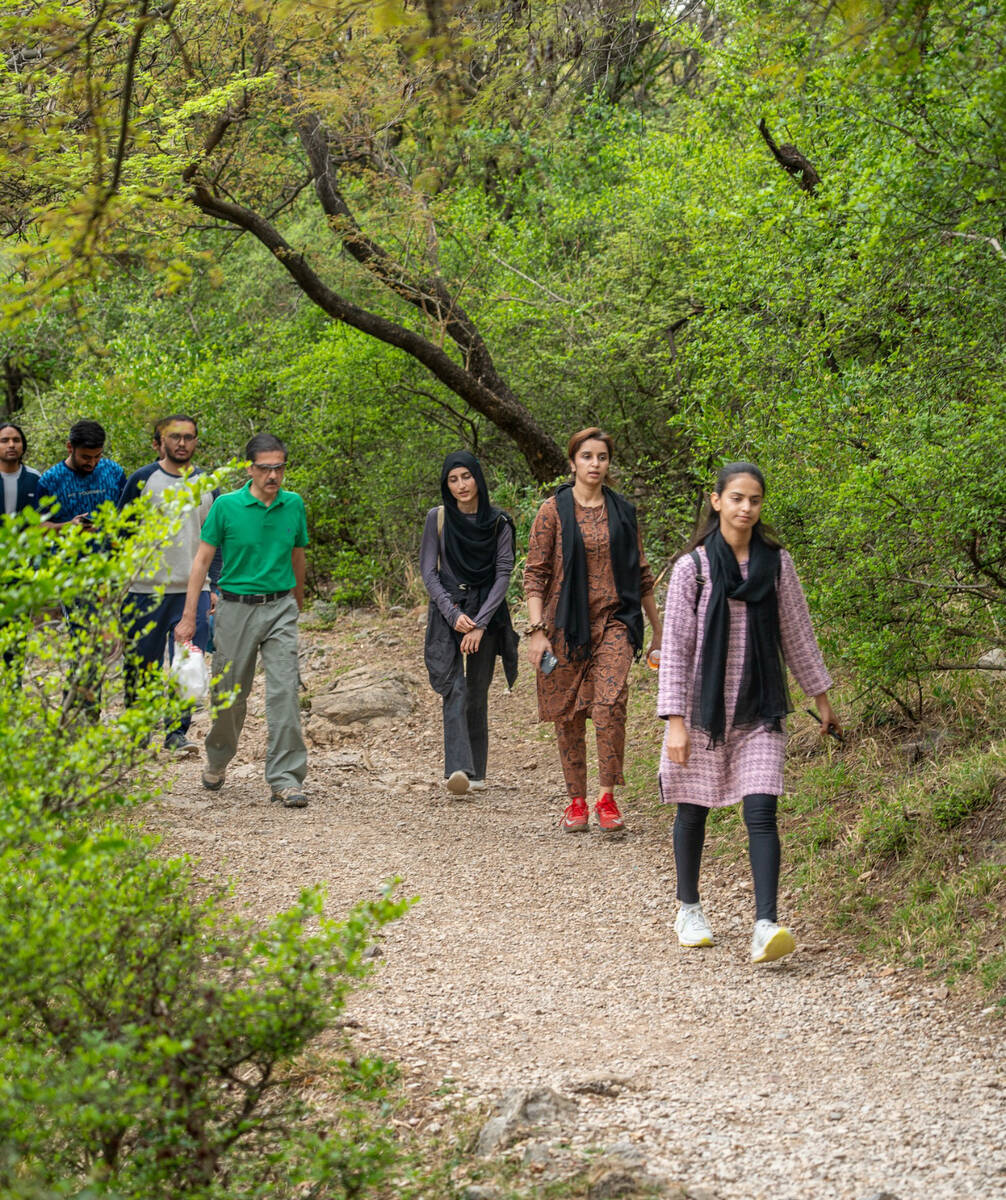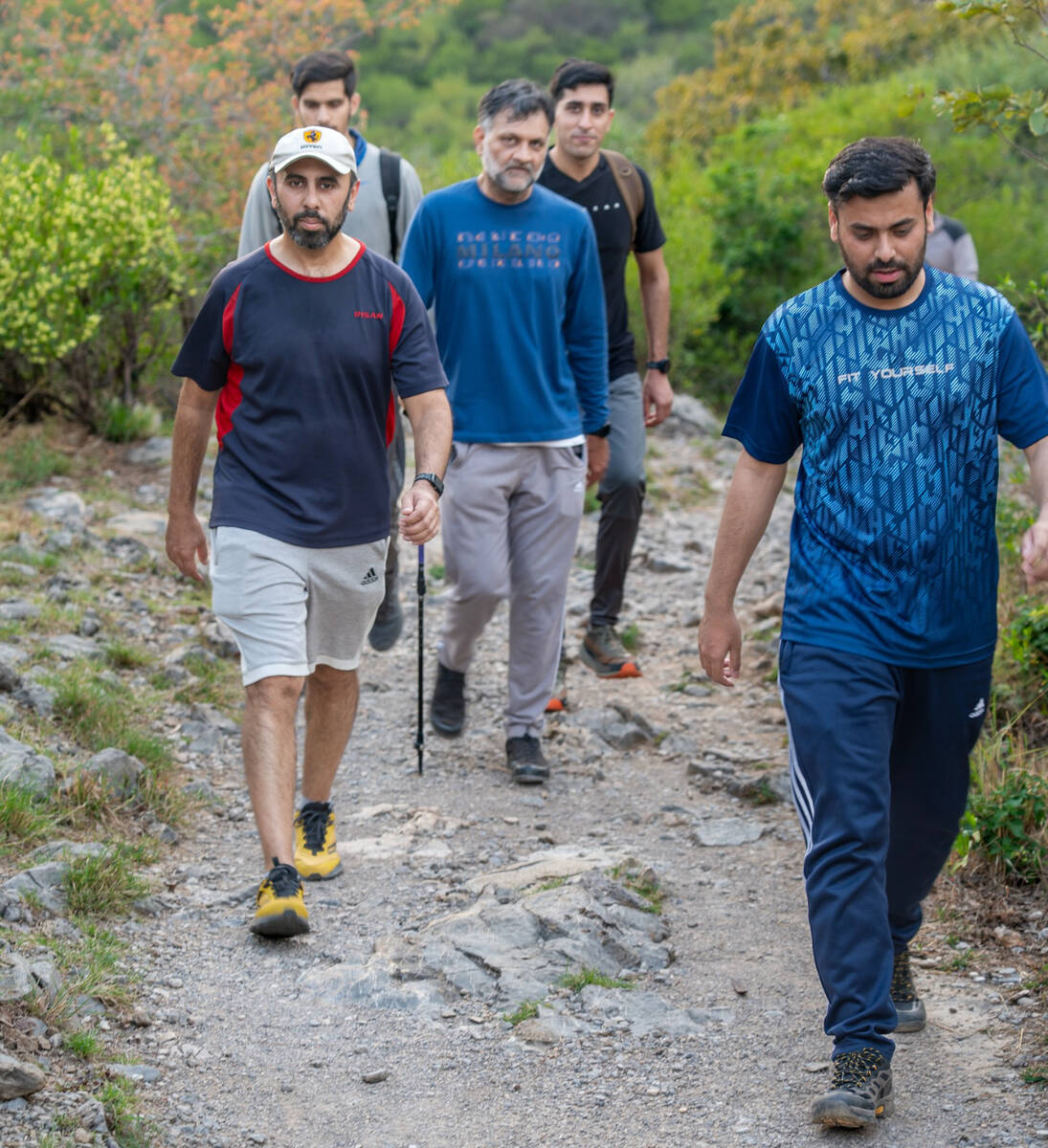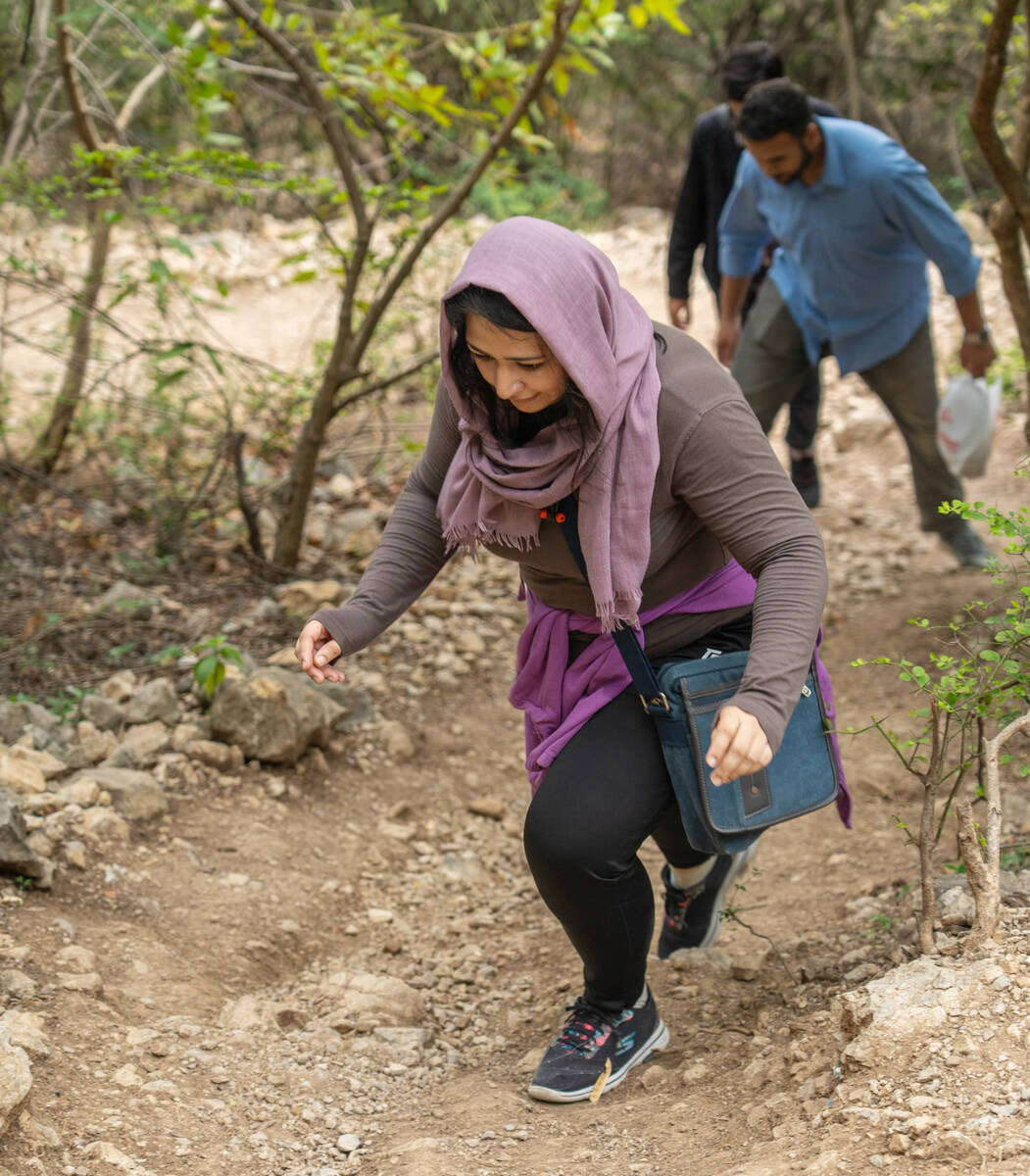TOKYO: Washoku, the traditional cuisine of Japan, is being considered for designation as part of the world’s priceless cultural heritage by the UN this week. But even as sushi and sake booms worldwide, purists say its finer points are candidates for the endangered list at home. The younger generation is increasingly eating Krispy Kreme doughnuts and McDonald’s, not rice.
Among cuisines, only French cooking has been distinguished as a national culinary tradition. Other picks by UNESCO for its World Heritage list, such as food from Mexico and Turkey, are more specific dishes. Washoku embraces seasonal ingredients, a unique taste, time consuming preparation and a style of eating steeped in centuries of tradition. At its heart is savory “umami,” recognized as a fundamental taste along with sweet, sour, salty and bitter.
“That’s a delicate subtle taste. But younger people can’t even taste it anymore because they’re too used to spicy oily food,” said Isao Kumakura, president of Shizuoka University of Art and Culture, who is leading the drive to get washoku recognized. “It’s Westernization. Japanese should be more proud of Japanese culture.”
Kumakura believes UNESCO recognition will send a global message and boost efforts to save washoku, a fight that faces serious challenges.
Annual rice consumption in Japan has fallen 17 percent over the last 15 years to 7.81 million tons from 9.44 million tons, according to government data.
Fast-food chains have become ubiquitous in Japan, including Krispy Kreme, Domino’s Pizza and the perennial favorite McDonald’s. Their reasonable prices and fast service are attracting the stomachs of the workaholic “salaryman” and OL, short for “office lady.”
As washoku dims in popularity, fears are growing the community ties it historically stood for may also be withering, such as cooking together for New Year’s and other festivals.
Those are traditions closely linked to family relations as defined by home-cooking — almost always the taste of mom’s cooking, or “ofukuro no aji,” as the Japanese say.
Yasuko Hiramatsu, mother, housewife and part-time translator, learned how to cook from her mother and grandmother, although she also relies on several cookbooks and watches TV shows to beef up her repertoire.
One of her favorite dishes is ground beef and potatoes cooked in soy sauce, sake and sugar, that she says has a reputation as the way to grab a man’s stomach, and thereby his heart.
Both her husband and son love her “nikujaga.” But it’s a close call whether that recipe fits the strictest definitions of washoku, which is generally more about fish than meat.
Hiramatsu is old-style in making tsukemono from scratch, using “nuka,” or fermented rice bran, from her grandmother’s recipe to replicate the taste that runs in her family. She sometimes doesn’t have time and resorts to packaged stuff from the supermarket. But that’s not the ideal.
“Of course, sometimes I eat out and get French fries, but this is what has been eaten for the longest time,” she said of her home cooking. “It must be something in our blood.”
Washoku is always about rice, miso or soy-bean-paste soup, “tsukemono” pickles, and usually three dishes — perhaps a slice of grilled salmon, broth-stewed “nimono” vegetables and boiled greens. Umami is based on flavor from dried bonito flakes and seaweed, Japan’s equivalent of soup stock.
Washoku is also about design. Fancy ceramic and lacquer-ware come in varying sizes, textures and shapes. Food is placed in a decorative fashion, sometimes with inedible items for effect like an autumn leaf.
Pieces of food may be cut into flowery shapes or carefully wrapped around other food, tied like a package with an edible ribbon. Recipes celebrate the seasons by focusing on fresh ingredients.
Kenji Uda, 47, the chief chef at Tokyo restaurant Irimoya Bettei, where he makes blowfish sashimi and crab cooked in rice, says he was 17 when he decided to devote his life to washoku.
“Japanese food is so beautiful to look at,” he said. “But it takes a lot of time. People are working and busy, and no longer have that kind of time.”
The exodus from washoku is apparent at Taiwa Gakuen, a Kyoto-based school for chefs, where the biggest number of students wants to learn Italian cuisine, followed by French, and interest in washoku is growing only among overseas students.
Seiji Tanaka, who heads the school, hopes the UNESCO decision expected at meeting in Azerbaijan this week will help draw Japanese people back to tradition.
“It’s endangered,” he said.
Tanaka believes the survival of washoku is critical because it’s linked with what he sees as the spirit of Japan, especially the family.
“The ‘wa’ in washoku means harmony,” he said.
In proper Japanese dining, the phrase “itadakimasu,” or “I am going to receive this,” is uttered, preferably in unison, at the beginning of a meal; “gochisousama,” or “thank you for the meal,” ends it.
Different from saying grace, the custom expresses gratitude not only to the chef but for the blessing of having food on the table — the grace of nature.
But even washoku experts say you shouldn’t feel guilty about not eating it three times a day.
Kumakura swears eating with chopsticks — daintily picking each bite-size serving, never piercing — is a symbol of Japanese-ness. But he acknowledges he often has toast and eggs for breakfast.
“Just please try to have washoku at least once a day,” he said with a laugh.
Japan food seeks heritage gong as young spurn rice
Japan food seeks heritage gong as young spurn rice

Where We Are Going Today: Ext. Seventeen Restaurant in Jeddah

- The menu offers a mix of Saudi flavors with a contemporary twist
Ext. Seventeen, a home-grown eatery by chef Amal Fakeih in Al-Yamamah district is a great spot for breakfast in Jeddah.
If you are looking for a place where you can enjoy a hearty breakfast and let time slip into lunch, this is it. The space is intimate, casual, and feels like a second home. The bistro-inspired environment, complemented by serene music, makes for a peaceful dining experience.
The menu offers a mix of Saudi flavors with a contemporary twist. During my visit, I decided to try their signature dishes, including the shakshuka with cherry tomatoes and thyme, and the labneh toast topped with sun-dried tomatoes, and it did not disappoint.
The fusion of Middle Eastern ingredients and Western techniques is evident in dishes like the popular apple pancakes and fondue, which are worth indulging in. For something lighter, I recommend the sweet salad with roasted beetroot and kale.
If you are dining with others, the “To Share” section of the menu is a great option, with offerings like a cheese platter and spicy dip served with pita chips.
The menu may not appear extravagant at first glance, but instead it leans towards familiar, home-style dishes.
Chef Amal takes the comfort of traditional home-cooked meals and gives each dish a thoughtful twist.
That being said, while the food is generally delicious, the space, though cozy, can feel a bit cramped, especially during peak hours. Additionally, I feel that the portion sizes could be slightly larger.
You can enjoy a hearty plate for around SR60 ($16), while more premium choices like the steak and eggs come in closer to SR100. If you are dining with friends or family, the sharing boxes and platters, priced around SR150.
When it comes to sweets, the lineup is both comforting and creative. There is cardamom French toast, cinnamon banana pancakes, and the standout fluffy coffee pancakes layered with coffee custard, maple syrup, toasted walnuts, and their signature cream is heavenly.
Check @extseventeen on Instagram for more details.
Where We Are Going Today: Yasumi Ramen

Yasumi Ramen has established itself as a go-to spot for a Japanese ramen experience in the Eastern Province.
It has just two branches in the Kingdom — one in Dhahran, which opened in 2022, and a newer location which opened in Alkhobar in late 2024 — and both spots share minimalist interiors and a near-identical menu.
The ramen here is thoughtfully prepared: we tried the ichiraku ramen, the most popular, according to the hostess. It contained large flat strips of chicken with a miso base. The crunchy bean sprouts and scallions alongside the Naruto fishcake offered different textures in each mouthful.
The ajitama — seasoned soy egg — served with thin noodles was cooked to perfection and the sheet of nori added bite.
The homemade iced tea, served with fresh lemon, was tangy without being overpowering, providing a refreshing counterpoint to the richness of the food.
Unfortunately, we were informed that the bestselling mango mochi was sold out.
There were no other customers present, turning the dining experience into a peaceful retreat in this otherwise bustling part of town.
If you’re intending to visit, do be mindful that parking spots are limited.
For more details check @yasumiramen on Instagram.
Where We Are Going Today: ‘Century Burger’ restaurant in Jeddah

- The original CB, my repeat order, is a simple burger packed with flavor, served with pillow-soft buns, a thick beef patty, Swiss cheese, lettuce, tomato and the signature CB sauce
Saudi burger joint Century Burger offers an extensive menu of mouthwatering dishes.
Known for its hearty meals and fresh ingredients, Century Burger began in Jeddah, where it established its first restaurant on Prince Sultan Road.
Today, the chain has 13 stores across the Kingdom and is among the largest Saudi casual dining brands.
I usually like to start with the black beetroot salad, a refreshing mix of arugula, beetroot, red onion, cooked sweet potatoes, feta cheese and a tangy dressing.
The original CB, my repeat order, is a simple burger packed with flavor, served with pillow-soft buns, a thick beef patty, Swiss cheese, lettuce, tomato and the signature CB sauce.
When I crave something savory and spicy, I opt for the fajita burger: A succulent beef patty topped with fresh grilled vegetables, fajita seasoning and melted cheese.
For anyone looking to reduce their carb intake, the keto burger is savory, delicious and very filling.
One of Century Burger’s many creative takes on burgers is black umami, served with black squid ink buns, grilled chicken breast, Swiss cheese, arugula, crispy onion, a house-made umami sauce and pickles.
The restaurant also offers variety of starters and side orders, from flavored chicken wings and chicken strips to various shrimp options.
Where We Are Going Today: Bab Sharqi – Saudi brand sweets

- This artistic touch makes their packaging both elegant and culturally meaningful
Eid is here, bringing joy, gatherings, and the tradition of sharing sweets. Bab Sharqi, a renowned Saudi brand, blends authenticity and luxury to enhance your celebrations.
Specializing in Middle Eastern confections and petit four, Bab Sharqi distributes its creations across the Kingdom.
The name Bab Sharqi, meaning “Eastern Gate,” reflects the rich heritage of the Arab world. Each box showcases stunning illustrations of historical landmarks from Riyadh, Jazan, AlUla, and Diriyah to Petra and Jerash in Jordan and beyond.
This artistic touch makes their packaging both elegant and culturally meaningful.
I tried their chocolate petit four, and it instantly became my favorite with Saudi coffee. Its buttery, melt-in-your-mouth texture and rich chocolate coating make it perfect for guests or personal indulgence.
They also offer milk petit four, assorted options in various sizes, and beautifully packaged baklava trays with cashew, pistachio, pecan, and even chocolate baklava.
For an extra special treat, the Orientals box is perfect for Eid gatherings. It features baklava filled with pecans and salted caramel, almonds, pistachios, and coconut, all coated in fine Belgian chocolate.
Bab Sharqi’s sweets are available for delivery via HungerStation, ToYou, and Keeta or in-store at Kottouf Wa Hala, a boutique for local and regional sweets.
For more details, visit @babsharqisweets on Instagram.
Fitness enthusiasts challenge themselves with pre-iftar hikes in Pakistani capital

- Hikers set out hour before sunset, break fast on trails on Margalla Hills National Park
- Participants say pre-iftar hikes help boost fat burning, maintain weight in Ramadan
ISLAMABAD: Zarnab Tahir struggled to catch her breath as the steep incline of the hiking trail at Islamabad’s picturesque Margalla Hills tested her endurance. Hiking can put people through physical exertion, especially when they do it on an empty stomach.
An hour before the sun sets and the call to prayer blares out from various mosques located in Pakistan’s capital city, a group of fitness enthusiasts take to the hiking trails in Margalla Hills National Park.

Islamabad Run With Us — IRU — which describes itself as Pakistan’s “pioneering running community,” is behind the pre-iftar hiking initiative.
“When you engage in pre-iftar (physical) activities during Ramadan, it gives you extra energy, an extra boost,” Qasim Naz, who founded IRU in 2016, told Arab News on hiking trail number three.

“And when someone joins in on an activity once or twice, they figure out it’s not that hard and they can sustain it comfortably.”
Naz stresses that staying active during the holy month is essential. The IRU organizes five activities a week, which include two runs and three hikes.

“Either we can maintain our weight, or if our goal is weight loss, we can achieve it by being in a calorie deficit while eating a healthy diet and exercising,” Naz explained.
Tahir, 22, meanwhile, said that she was committed to reaching the top of hiking trail before sunset. This was the second time she was hiking with IRU.

She agreed with Naz that group activities are “much easier” to sustain.
“I think it is important to go at your own pace and it’s so much easier with the group,” Tahir, a content creator, told Arab News.

“If you go alone, it’s kind of more difficult and you are, like, really slow but if you go with the group you can maintain that pace and I think it’s much easier that way.”
Mahwish Ashraf, a journalist associated with a foreign diplomatic mission in Islamabad, shared how she struggled the first time that she went on a pre-iftar hike with IRU.
“The first time I was hiking, I returned from in between, I couldn’t complete it,” she admitted. “So, this is my second time hiking with the IRU, and gladly, I’m at the main point, the meeting point.”
Eraj Khan, a commercial specialist visiting from Australia to spend Ramadan with his family, said pre-iftar hikes give one “lots of energy.”
“For fat burning, it’s a great activity,” Khan said. “Especially because the last two hours of fasting are the hardest, most people feel really hungry. But so far, I’m loving it.”
As the clock continued to tick and evening settled in, the hikers began to pick up their pace. For Tahir, reaching the top of the trail before sunset was a victory in itself.
She had pushed past exhaustion, embraced the challenge and proved to herself that she was capable of more than she thought she could achieve.
And according to her, hiking with the group made all the difference.
“The energy of the group keeps you going,” she said. “Even when you feel like stopping, you see everyone else moving forward, and you push through.”
















